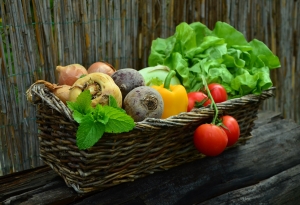Seven self-care tips for practitioners and patients
March 3, 2017
 Providers must have a self-care practice, or start one immediately, says Victoria Maizes, MD, who spoke at the Integrative Healthcare Symposium Annual Conference in New York City last week. Start with a self-assessment in seven key wellness areas: movement, mind-body, food, environment, relationships, sleep, and spirituality. Practitioners need to be honest about their physical activity, diet, stress management, environmental exposures, sleep, relationships, and spirituality, specifically what areas need to be improved. Once a provider has addressed their own health and self-care, then they can turn to their patients and adequately offer programs and practices in each of the wellness areas. Maizes encourages providers to explore resources available in their communities that they can refer their patients to, whether that be community gardens or public park services. The following highlights the seven wellness elements and how practitioners can improve these areas for themselves and for their patients. Click here for more information.
Providers must have a self-care practice, or start one immediately, says Victoria Maizes, MD, who spoke at the Integrative Healthcare Symposium Annual Conference in New York City last week. Start with a self-assessment in seven key wellness areas: movement, mind-body, food, environment, relationships, sleep, and spirituality. Practitioners need to be honest about their physical activity, diet, stress management, environmental exposures, sleep, relationships, and spirituality, specifically what areas need to be improved. Once a provider has addressed their own health and self-care, then they can turn to their patients and adequately offer programs and practices in each of the wellness areas. Maizes encourages providers to explore resources available in their communities that they can refer their patients to, whether that be community gardens or public park services. The following highlights the seven wellness elements and how practitioners can improve these areas for themselves and for their patients. Click here for more information.  Movement
Movement
Studies show that patients who walk in the forest everyday see their cortisol drop by 16 percent and heart rate by 4 percent. Spending time in nature has a well being effect, Maizes says. Even schools across the world are recognizing the positive health benefits in walking outside—from Scotland to New York City, students are encouraged to head outside for a mile-long walk or job, and schools are seeing slimmer students and fewer behavioral issues as a result. There's no doubt that exercise, in particular movement outside, has a positive impact on overall health, regardless of age. But what can practitioners do? One national program to consider, says Maizes, is The National Park Rx, an initiative where practitioners partner with public parks and facilities to "prescribe" exercise. The program is free to join. Click here for more information.  Mind-body
Mind-body
Mindfulness is a skill that can improve resilience and well-being. There are a number of different ways to integrate mindfulness into everyday, says Maizes. The Mindfulness in Schools project makes the practice part of children's. daily education. Yoga and community gardening can improve mindfulness, and allow opportunity to reflect and be aware of one's surroundings. Breath work is a great free option for practitioners to prescribe, as well as listening to music and walking in nature (quietly and mindfully—no using cell phones, she says).  Food
Food
Cost and access is an issue when it comes to purchasing wholesome foods, says Maizes. Produce is expensive and, depending on geographical region, not always easy to come by. There are a few programs that exist to address this issue that practitioners should be aware of, including nonprofits that help low income families obtain more financial assistance if they shop at farmer's markets, and fruit and veggie prescription programs that target obesity and diet-related disease.  Environment
Environment
A 2016 report from the World Health Organization says 25 percent of deaths are attributable to environmental factors, such as air and water pollution. Water is the healthiest beverage, and is what public health agencies consistently recommend, says Maizes. However, 40 percent of states have lead levels higher than Flint, Michigan, which has been coping with lead-laced water issues for nearly three years. Practitioners have to be aware of environmental factors that could be affecting their patients, whether it's from drinking water or other products that they use on a regular basis. Click here for an online environmental risk assessment. The environment a person is exposed to affects their overall health indirectly. A 1984 study conducted by Gregory Ulrich found that patients getting back surgery had less pain and negative nurse notes when their recovery room overlooked nature, as opposed to a brick wall. This reveals the impact of place on well-being, Maizes says.  Relationships
Relationships
Positive relationships reduce risk of premature death by 50 percent, said Maizes. The human stress response is well-studied. While men typically have a "fight or flight" response, women react to stress different, with a "tend and befriend" approach, according to Maizes. When women get stressed, they prefer to gather together as a community to nurture one another. This practice has a health-promoting affect, adding years to life.  Sleep
Sleep
Multiple cities in states like Arizona passed ordinances to "keep the dark night sky," containing light pollution from high-rises and businesses. When people sleep with light exposure, it can affect their circadian rhythm. In addition, watching stressful news or using brightly-lit screens before bed can have a negative affect on sleep patterns. Practitioners need to help patients develop healthy sleep patterns—relaxation training, limiting caffeine, reducing light exposure, and cognitive therapy, for example.  Spirituality
Spirituality
Faith tradition or spiritual practices are an important part of well-being. While many people do have faith or spiritual traditions, it's not easy to talk about. Practitioners can use general terms to address spirituality, by looking at core values we all hold—compassion, kindness, altruism, etc. A daily gratitude practice is a great free option to offer to patients. Take a few minutes at the end of the day and simply write or say three things you are grateful for. Click here for more information. All of these seven wellness elements enhance resilience and our ability to bounce back when faced with adversity. By building resilience, we can: - Care for physical, emotional, and intellectual well-being
- Nurture supportive relationships that create love and trust
- Cultivate a positive few of ourselves and confidence in strengths and abilities




















SHARE